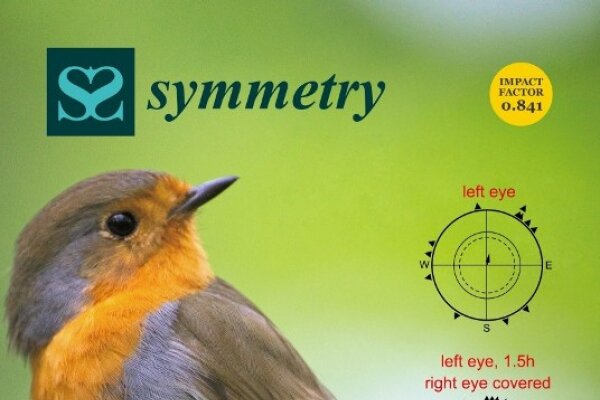2017-05-19

There is good evidence that some bird species can “see” the pole via their right eye and thus with their left brain hemisphere. This lateralization develops during the first winter and initially shows important plasticity. During the first spring migration, magnetic compass asymmetry can even be temporarily abolished by covering the right eye. In the present paper, biologists from Frankfurt and biopsychologists from Bochum used the migratory orientation of robins to analyze the circumstances under which the lateralization of magnetic compass orientation can be altered. It turned out that in young animals already a period of 1½ h in which the dominant right was occluded was sufficient to provide the left eye the ability for successful compass orientation. However, this effect was rather short-lived, as the right eye dominance recurred shortly thereafter again. In addition, training the left eye of robins to adjust to “unnatural” magnetic intensities was possible but was not transferred to the dominant right-eye system. Taken together, the asymmetry of magnetic compass orientation goes through stages of plasticity in the early life of birds. During this time many aspects can be altered and even the dominance direction can be altered, albeit only for short periods. This paper was awarded with the cover of this special issue of the journal “Symmetry”.

There is good evidence that some bird species can “see” the pole via their right eye and thus with their left brain hemisphere. This lateralization develops during the first winter and initially shows important plasticity. During the first spring migration, magnetic compass asymmetry can even be temporarily abolished by covering the right eye. In the present paper, biologists from Frankfurt and biopsychologists from Bochum used the migratory orientation of robins to analyze the circumstances under which the lateralization of magnetic compass orientation can be altered. It turned out that in young animals already a period of 1½ h in which the dominant right was occluded was sufficient to provide the left eye the ability for successful compass orientation. However, this effect was rather short-lived, as the right eye dominance recurred shortly thereafter again. In addition, training the left eye of robins to adjust to “unnatural” magnetic intensities was possible but was not transferred to the dominant right-eye system. Taken together, the asymmetry of magnetic compass orientation goes through stages of plasticity in the early life of birds. During this time many aspects can be altered and even the dominance direction can be altered, albeit only for short periods. This paper was awarded with the cover of this special issue of the journal “Symmetry”.